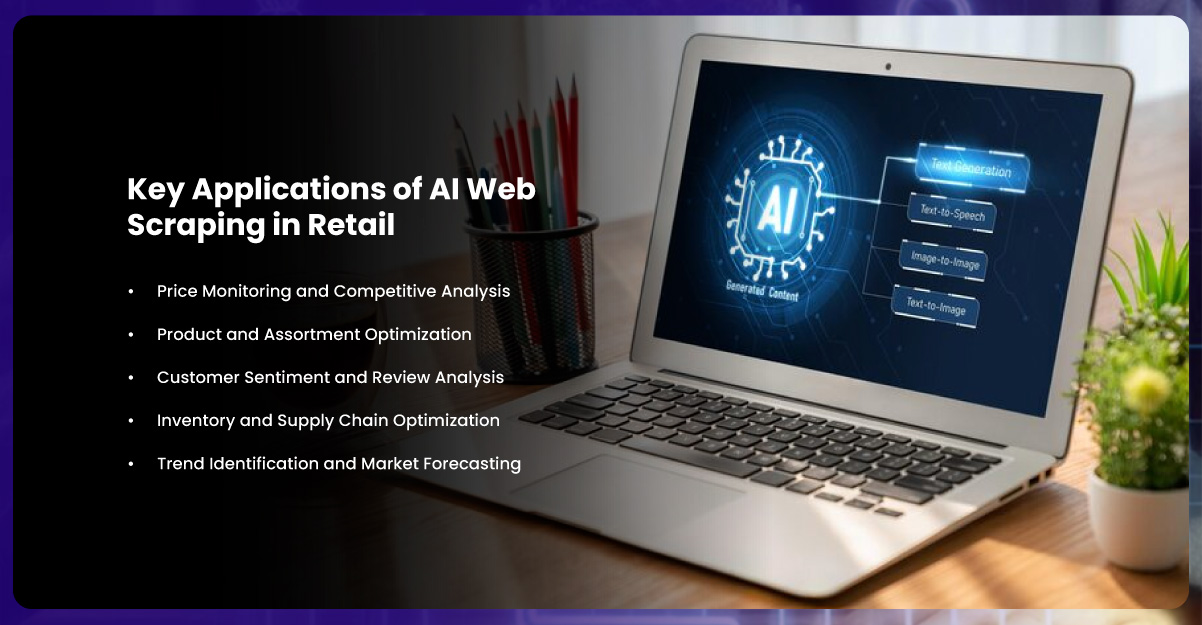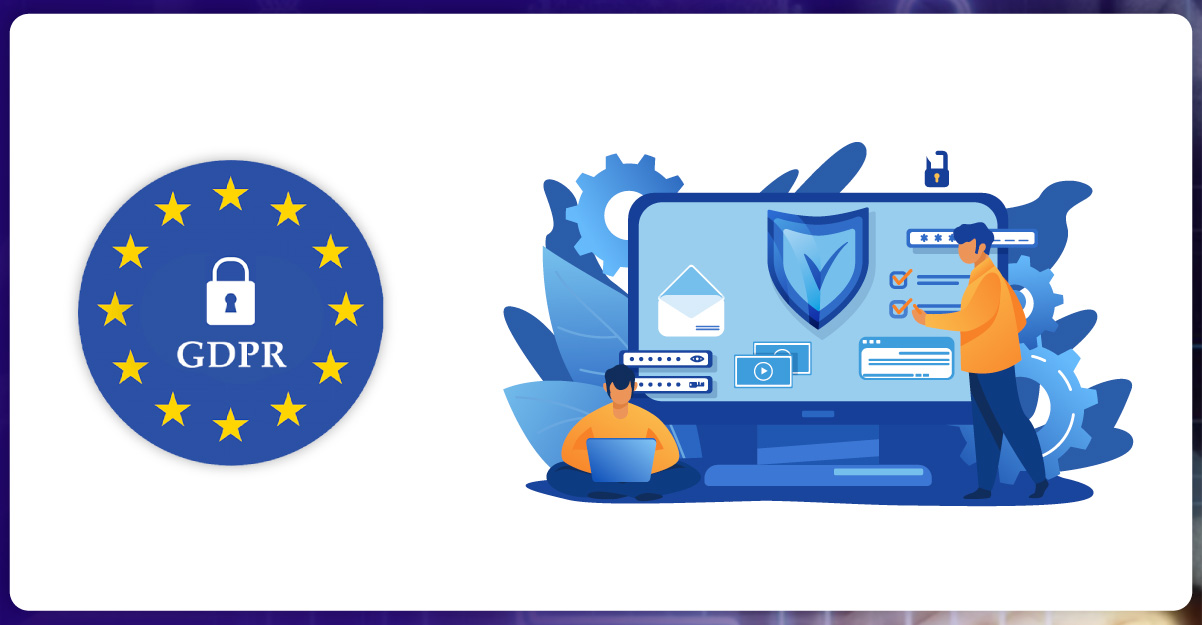

The retail industry is undergoing a profound transformation, driven by AI web scraping retail intelligence 2026. Businesses are increasingly leveraging advanced data collection techniques to stay competitive, understand customer behavior, optimize pricing, and predict market trends. The integration of artificial intelligence (AI) with web scraping technologies is at the forefront of this evolution, enabling retailers to extract meaningful insights from massive volumes of online data.
Modern retailers are no longer relying solely on traditional market research. Instead, retail intelligence AI web scraping allows them to gain real-time insights into competitors’ offerings, pricing strategies, product availability, and promotional campaigns. This combination of AI and web scraping is not just a technological upgrade; it represents a strategic advantage in an increasingly competitive market.

At the heart of this transformation are AI driven web scraping tools. These tools employ machine learning algorithms and natural language processing to navigate complex retail websites, extract structured and unstructured data, and generate actionable insights. Unlike traditional scraping methods, AI-powered tools can adapt to changes in website structures, detect anomalies, and classify data efficiently, making them indispensable for modern retail analytics.
Retailers today can leverage web scraping retail analytics to track real-time pricing fluctuations, monitor stock levels, and analyze consumer sentiment across multiple platforms. This data-driven approach helps brands respond to market changes faster, optimize inventory management, and enhance customer satisfaction.

1. Price Monitoring and Competitive Analysis
AI web scraping solutions allow retailers to continuously monitor competitors’ pricing strategies. With AI retail data extraction, companies can identify pricing trends, detect discounts, and adjust their own pricing dynamically to maintain competitiveness. This real-time intelligence minimizes revenue loss due to underpricing or overpricing products.
2. Product and Assortment Optimization
Retailers can utilize scraped data to analyze which products perform best across regions and platforms. Real-time web scraping retail data enables brands to identify high-demand products, remove low-performing items, and tailor product assortments to specific customer segments. The result is a more agile and customer-centric retail strategy.
3. Customer Sentiment and Review Analysis
Understanding consumer sentiment is critical in shaping brand perception and loyalty. AI algorithms can process large volumes of customer reviews, social media mentions, and feedback using retail predictive analytics scraping. This insight helps retailers anticipate demand, detect product issues, and refine marketing strategies based on real-world consumer opinions.
4. Inventory and Supply Chain Optimization
Efficient supply chain management is a critical aspect of retail success. Web scraping combined with AI can forecast stock requirements and optimize inventory placement. Web scraping and AI integration ensures that inventory data is accurate and updated in real-time, preventing stockouts or overstock scenarios, ultimately improving operational efficiency.
5. Trend Identification and Market Forecasting
Next-generation retailers rely heavily on predictive analytics to stay ahead of trends. Next-gen retail data intelligence 2026 combines historical sales data with real-time market intelligence collected through web scraping, enabling brands to forecast future trends, anticipate demand spikes, and plan promotional campaigns proactively.
Machine learning is revolutionizing how retail data is collected and analyzed. Machine learning web scraping retail techniques enable automated classification, clustering, and anomaly detection in vast datasets. For instance, AI models can automatically identify product categories, detect price discrepancies, and flag unusual patterns that may indicate market opportunities or threats.
By employing these techniques, retailers can reduce human intervention, minimize errors, and accelerate the decision-making process. The ability to process unstructured data from websites, social media, and e-commerce platforms in near real-time is a game-changer for data-driven retail operations.
Unlock actionable retail insights today with our AI-powered web scraping solutions and stay ahead of the competition!
The web scraping tools market 2026 is poised for rapid growth as more businesses embrace AI-driven data extraction. Advanced web scraping platforms are increasingly offering features like cloud-based data storage, real-time monitoring dashboards, and AI-enhanced data cleaning. Retailers can now access data from thousands of online sources seamlessly, transforming raw information into actionable business intelligence.
Investments in AI web scraping technologies are expected to grow significantly in the coming years. Companies that adopt these solutions early will benefit from faster insights, improved operational efficiency, and enhanced predictive capabilities.

While AI web scraping offers immense potential, it also comes with challenges. Retailers must navigate issues such as website anti-scraping mechanisms, data privacy regulations, and ethical considerations. Ensuring compliance with legal frameworks like GDPR is critical when scraping personal data or tracking user behavior.
Additionally, the quality of scraped data depends on the robustness of the AI models used. AI-powered data scraping must be continuously refined to handle dynamic website structures, reduce errors, and maintain high accuracy in predictions.
In conclusion, the fusion of AI and web scraping is set to redefine retail strategies in 2026. From competitive pricing and product optimization to trend forecasting and sentiment analysis, AI-powered data scraping is empowering retailers to make data-driven decisions with unparalleled speed and accuracy.
Organizations investing in Training Data for Machine Learning and Artificial Intelligence are gaining a significant edge in building intelligent retail solutions. Similarly, companies utilizing AI Model Custom Web Scraping Services are positioning themselves at the forefront of retail innovation.
By leveraging these technologies individually, businesses can unlock deeper insights, anticipate consumer behavior, and gain a sustainable competitive advantage in the evolving retail ecosystem.
Experience top-notch web scraping service and mobile app scraping solutions with iWeb Data Scraping. Our skilled team excels in extracting various data sets, including retail store locations and beyond. Connect with us today to learn how our customized services can address your unique project needs, delivering the highest efficiency and dependability for all your data requirements.
AI Web Scraping Retail Intelligence 2026 extracts and analyzes online retail data using AI for pricing, demand forecasting, and trend analysis.
AI retail data extraction provides insights on prices, trends, and customer sentiment, enabling smarter and faster business decisions.
Web scraping retail analytics helps track competitors, monitor pricing, and optimize product assortments using real-time retail data.
Machine learning web scraping classifies products, detects pricing patterns, and automates retail data analysis efficiently.
AI-driven retail intelligence 2026 empowers brands to forecast trends, optimize pricing, and enhance customer experience using real-time insights.